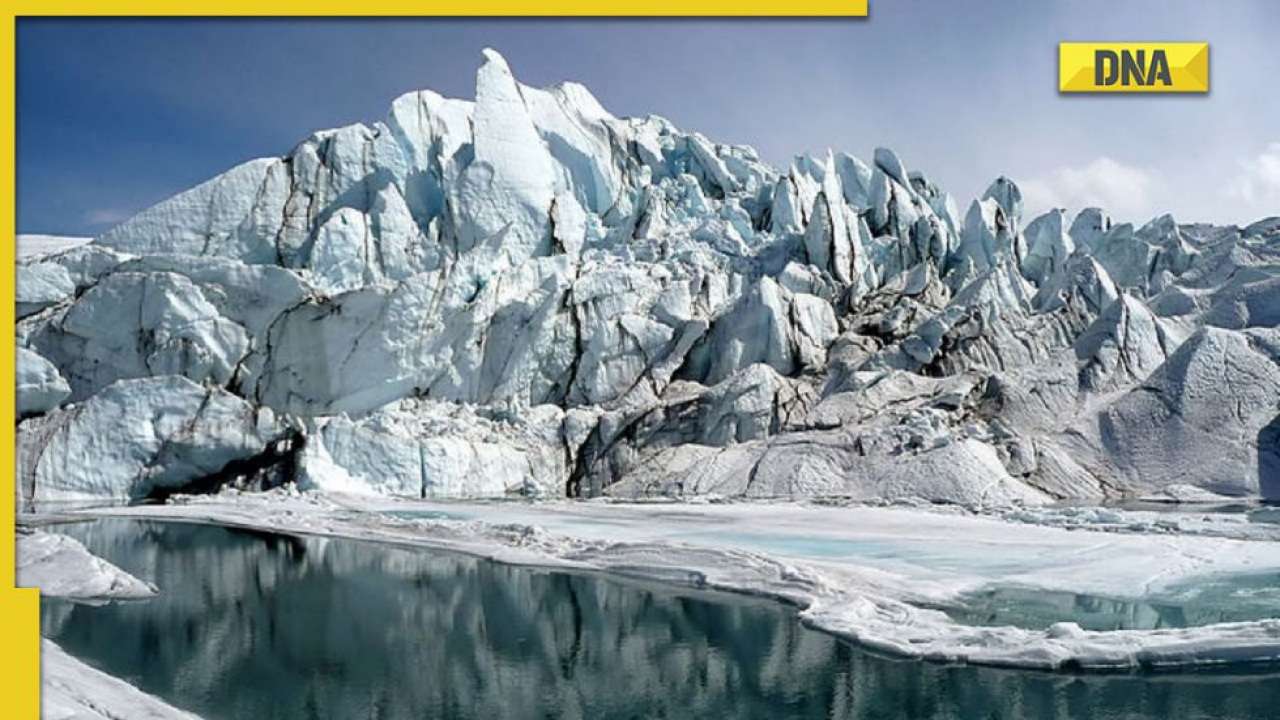
Switzerland - On hearing the name, beautiful white valleys come to mind, which are present in everything from movies to tales. But now, the black shadow of global warming has fallen on the white plains of Switzerland. If it is not stopped, by the end of this century the white plains of Switzerland will be left only in fairy tales. And this is not an imaginary threat.
Now, the glaciers are melting so fast that for the first time black mountains are visible. Where hundreds of meters of snow used to freeze, there are stones out there. This is the Alps mountain range, 80 percent of which is in Switzerland. They have the status of UNESCO World Heritage. This identity of Switzerland is rapidly melting away.
This year, the heat has tormented Europe. Forest fires and temperatures raised the temperature across Europe to such a high that the lands dried up and the never-melting snow on the mountains began to break apart. Switzerland's glaciers are setting melting records.
Switzerland's glaciers have melted at a rate of 6 percent in the past year. When recording the rate of melting of glaciers began about a century ago, these glaciers have never before melted so rapidly in a year. Earlier in 2003, Switzerland's glaciers had melted by 3.8 percent in a year. And this year the rate has almost doubled.
Glaciers are melting in every part of the earth due to the effect of global warming. But it is happening so fast in Switzerland that if it continues like this, in the next century, only a small amount of glaciers will remain in Switzerland.
Switzerland's 1400 glaciers have shrunk by more than half since the early 1930s. In just 6 years since 2016, 12% of Switzerland's glaciers have disappeared. If glaciers continue to melt at the same rate, by the year 2100, 80 percent of Switzerland's glaciers will melt.
On the hills of the Alps in Switzerland, the hopes of scientists are also being shattered by seeing the ice breaking at quadruple the speed of the day.
"If we compare the loss that we had in this year to the total ice volume that is still remaining, we've lost about six percent of the total volume. This is enormous , it's much more than the previous record of 2003, there was 3.8 percent. In terms of meters, we've lost about three to four meters of ice thickness on average. glacier in Switzerland,” says Matthew Huss, Glaciologist, Swiss Glacier Monitoring Network.
The remnants of the last ice age, that is, most of the world's mountain glaciers are surrendering to global warming.
These melting glaciers in Switzerland are not only worrying scientists. Rather, people are also afraid that if there are no glaciers, what will happen to them? Because the economy of Switzerland is based on sports like skiing and tourism. If there are no glaciers, then there will be no skiing and no tourism... who will come to Switzerland to see these rocky roads instead of snow.
Glaciers are the natural sources of rivers. The existence of rivers comes from glaciers. If there were no glaciers, there would be no rivers. And the truth is that glaciers are ending due to the effect of global warming. And this cycle is not going on from today onwards. The melting of glaciers is nothing new. But the non-freezing of glaciers is a matter of concern.
10 percent of the world is covered by ice. which is fast disappearing. In the 1990s, an average of 76 trillion tons of ice was melting from the Earth's surface every year. In the year 2021 i.e. last year, this speed of melting of ice has become 1 lakh 20 thousand crore tonnes per annum. During the year 1994 to 2017, 28 lakh crore tonnes of ice from the earth has been melted and water has been formed in 23 years.
According to the US space agency NASA, the sea level has risen 6 to 8 inches in the last 100 years. By the year 2050, the water level of the world's seas will rise 10 to 12 inches from now.
And its effect will be that sea water will enter at least 36 big cities of the world. And about 23 crore people will have to be displaced. These cities include Japan's capital Tokyo, India's financial capital Mumbai, America's New York City, Turkey's Istanbul, Kolkata, Dhaka, London, Bangkok, Miami, Sydney, and even large and developed cities like Dubai. Scientists have estimated that if the ice of Antarctica, Greenland and all the glaciers present in the world melts, then the sea level will rise by 230 feet. And all the countries and cities situated near the coast will be submerged in water.
The way glaciers are melting rapidly around the world including Switzerland, this is an alarm of danger, which if ignored, is sure to wipe out the entire human race in the future.